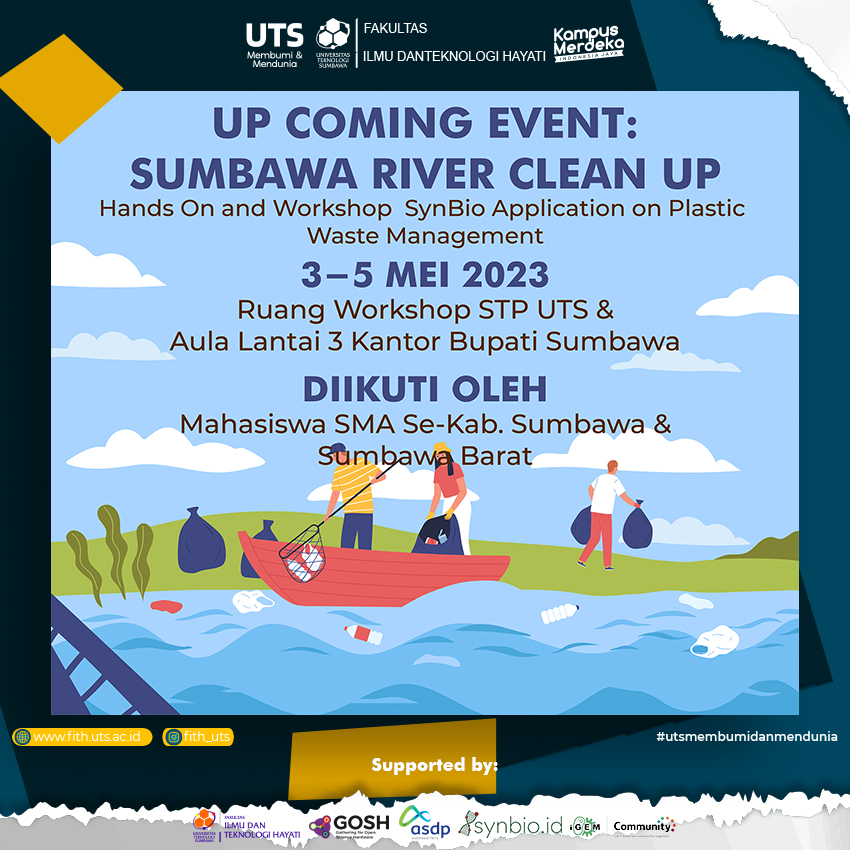Sumbawa (UTS). The Faculty of Life Technology, Sumbawa University of Technology May 3-5 2023 has carried out the Sumbawa River Clean Up activity which seeks to increase public knowledge and awareness regarding microplastics by targeting high school students in the Sumbawa District and UTS students.
FITH’s Sumbawa River Cleanup activity was carried out in the BrangBiji River section on May 4 2023 in collaboration with Synbio.id, Foldscope Network ID and SynBio 101 from iGEM Community.
Sumbawa Island, which was designated as a “biosphere reserve” by UNESCO in June 2019, is a buffer zone that supports dozens of rare flora and fauna such as whale sharks, yellow-crested cockatoos and various other unique marine biota. These various local Sumbawa germplasm are very valuable, so there needs to be serious efforts from all levels of society and the government to maintain their sustainability.
One of the big threats to this ecosystem is plastic waste from various daily activities of the community which is carried away by river currents, empties into the sea, and does not decompose, otherwise known as microplastics. The public’s low knowledge about the dangers and management of plastic waste, as well as the government’s lack of effort in processing, makes the waste problem in Sumbawa even more complex. The BrangBiji River, Sumbawa Regency is one of the main rivers whose flow passes through residential areas, including market areas and empties into the sea. In this river various plastic waste contaminants from both settlements and industrial activities accumulate.
It is hoped that the Sumbawa River Clean Up activity will increase their awareness of the use of plastic in various daily activities. The next activity is concrete action to clean up the BrangBiji River from trash and also hands-on material on plastic degradation strategies using a synthetic biology approach.
Activities carried out on May 4 2023 which took place on the BrangBiji River. The committee and participants carried out water sampling activities and then carried out microplastic observations with a foldscope to see the bacteria present in the BrangBiji River water. After the water sampling activity, cleaning activities were carried out in the BrangBiji River. A total of 10 bags of waste collected with different weights from each bag and the time needed to collect this waste is about 1 hour. These results prove that there is still a lot of waste in the BrangBiji River, dominated by plastic and cloth waste as well as some metal and glass that has been collected.
“On our first day, there was material discussion, there were also introductions to other schools, then on the 2nd day we had a search to the BrangBiji River, then it was like we were looking at bacteria with a paper-like microscope, then on the 3rd day , we did a fruit DNA test experiment, groups 1, 2 and 3 did a dragon fruit DNA test which we did was like color separation, so electrophoresis is called to separate protein components,” said Arnia Umiyanri and Baiq Afrezaaulia, students from SMAN 1 Sumbawa Besar.


